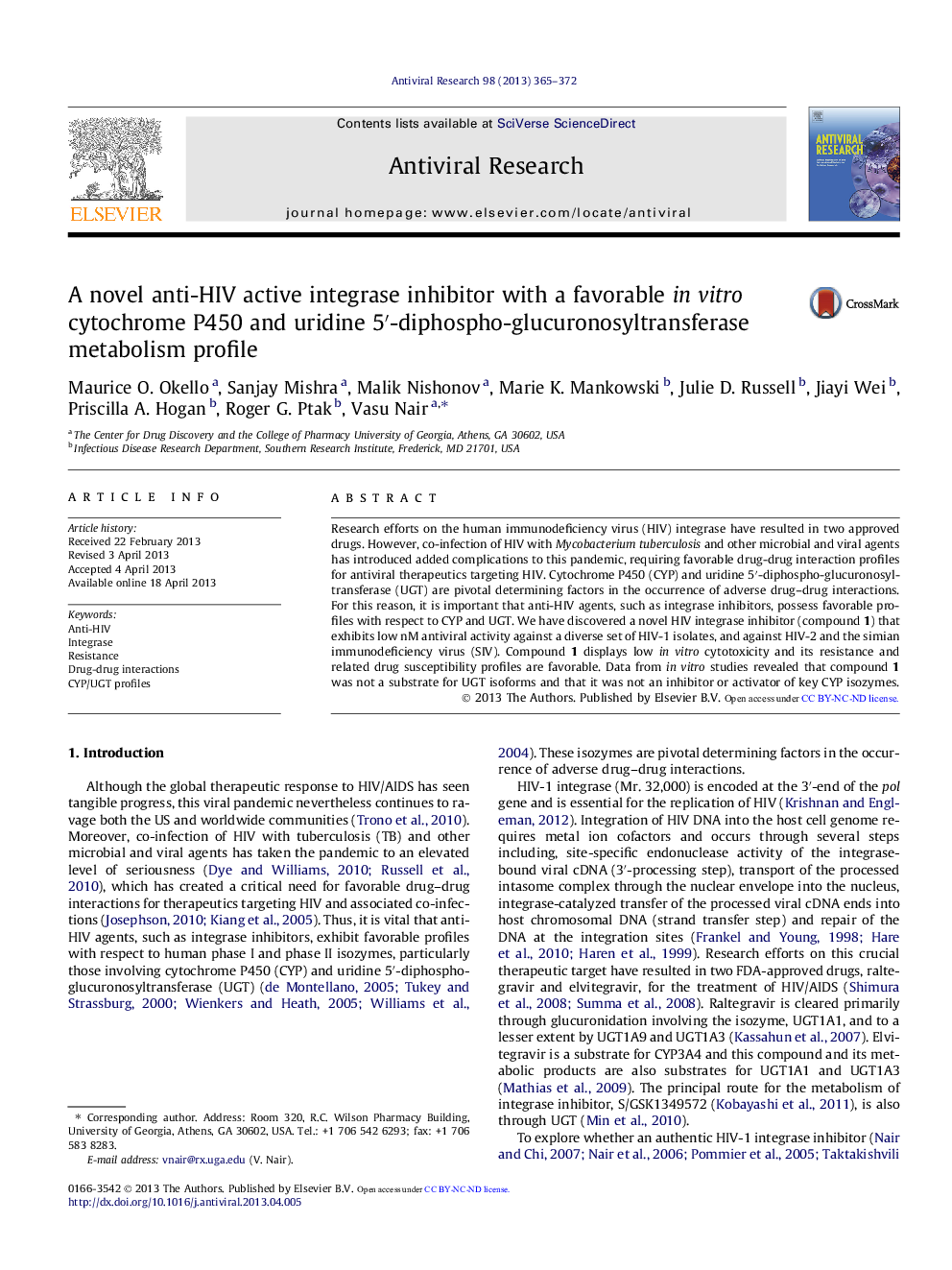| Article ID | Journal | Published Year | Pages | File Type |
|---|---|---|---|---|
| 5822375 | Antiviral Research | 2013 | 8 Pages |
â¢We have discovered an integrase inhibitor with in vitro anti-HIV activity.â¢The compound exhibited low cytotoxicity in peripheral blood mononuclear cells.â¢Resistance and related fold change in drug susceptibility are addressed.â¢Data on the CYP and UGT profile of the compound are presented.
Research efforts on the human immunodeficiency virus (HIV) integrase have resulted in two approved drugs. However, co-infection of HIV with Mycobacterium tuberculosis and other microbial and viral agents has introduced added complications to this pandemic, requiring favorable drug-drug interaction profiles for antiviral therapeutics targeting HIV. Cytochrome P450 (CYP) and uridine 5â²-diphospho-glucuronosyltransferase (UGT) are pivotal determining factors in the occurrence of adverse drug-drug interactions. For this reason, it is important that anti-HIV agents, such as integrase inhibitors, possess favorable profiles with respect to CYP and UGT. We have discovered a novel HIV integrase inhibitor (compound 1) that exhibits low nM antiviral activity against a diverse set of HIV-1 isolates, and against HIV-2 and the simian immunodeficiency virus (SIV). Compound 1 displays low in vitro cytotoxicity and its resistance and related drug susceptibility profiles are favorable. Data from in vitro studies revealed that compound 1 was not a substrate for UGT isoforms and that it was not an inhibitor or activator of key CYP isozymes.
